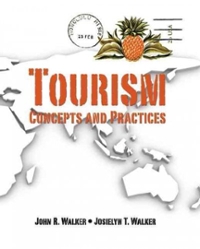Question
Problem Solving & Quantitative Analysis: o Identify the critical problem in the case o Use both qualitative and quantitative data to produce a SWOT analysis
Problem Solving & Quantitative Analysis: o Identify the critical problem in the case o Use both qualitative and quantitative data to produce a SWOT analysis Identify 6+ major Strengths in the internal environment Identify 6+ major Weaknesses in the internal environment Identify 6+ major Opportunities in the external environment Identify 6+ major Threats in the external environment Generate 6+ alternatives o Use the QSPM to select the 3 most attractive alternative to address the problem o Produce a 3-year plan to implement the selected strategy
Case Instructions: The company in the case, Boeing, has hired you as a strategist to produce a strategic analysis on its corporate strategies. The company had seen tremendous growth in the past but its operations have encountered "turbulence" in recent years. The case starts with the company's press release on its 2021 Q3 reports, Boeing company fact sheets, a Trefis analysis of Boeing's value composition and how Boeing compares against Lockheed Martin (1 of the top 2 competitors for Boeing), and ends with information related to Airbus (the other of the top 2 competitors). All the information you need to analyze this case is contained within the case file. Your analysis of this case should consist of 4 components (see the template for the rubrics): 1. Critical Problem or Potential Critical Problem: Narrow down to ONE strategic problem. Start with "The problem is...." (Example: "High oil prices" is frequently considered a "problem," but it really is the cause of problems like low profit margin). Follow by "It's a problem because..." (what, why where and how it is a problem) End with "Not addressing this problem would ..." ( the consequences of negligence) 2. SWOT Analysis: Use the SWOT matrix to present a summary of your internal and external assessments, and your alternative solutions to the problem. Interpret the results of your analysis, precisely and concisely. Specifically: o Use both qualitative and quantitative data to produce a SWOT analysis Identify 6+ major Strengths in the internal environment Identify 6+ major Weaknesses in the internal environment Identify 6+ major Opportunities in the external environment Identify 6+ major Threats in the external environment Generate 6+ alternatives 3. Alternative solutions and decision: Use the QSPM to select the most attractive of your top 3 alternative solutions. Discuss why it is better than the other solutions, precisely and concisely. 4. Implementation: o Produce a 3-year plan to implement the selected strategy, by specifying: Which group(s) of stakeholders will be affected by your choice of strategy? What stakeholder resistance do you anticipate? What would a step-by-step implementation plan look like for your strategy, with the stakeholder resistance considered?
ExitCasePartB - Case.pdf:
file:///C:/Users/me/Downloads/ExitCasePartB%20-%20Case.pdf
Step by Step Solution
There are 3 Steps involved in it
Step: 1

Get Instant Access to Expert-Tailored Solutions
See step-by-step solutions with expert insights and AI powered tools for academic success
Step: 2

Step: 3

Ace Your Homework with AI
Get the answers you need in no time with our AI-driven, step-by-step assistance
Get Started


